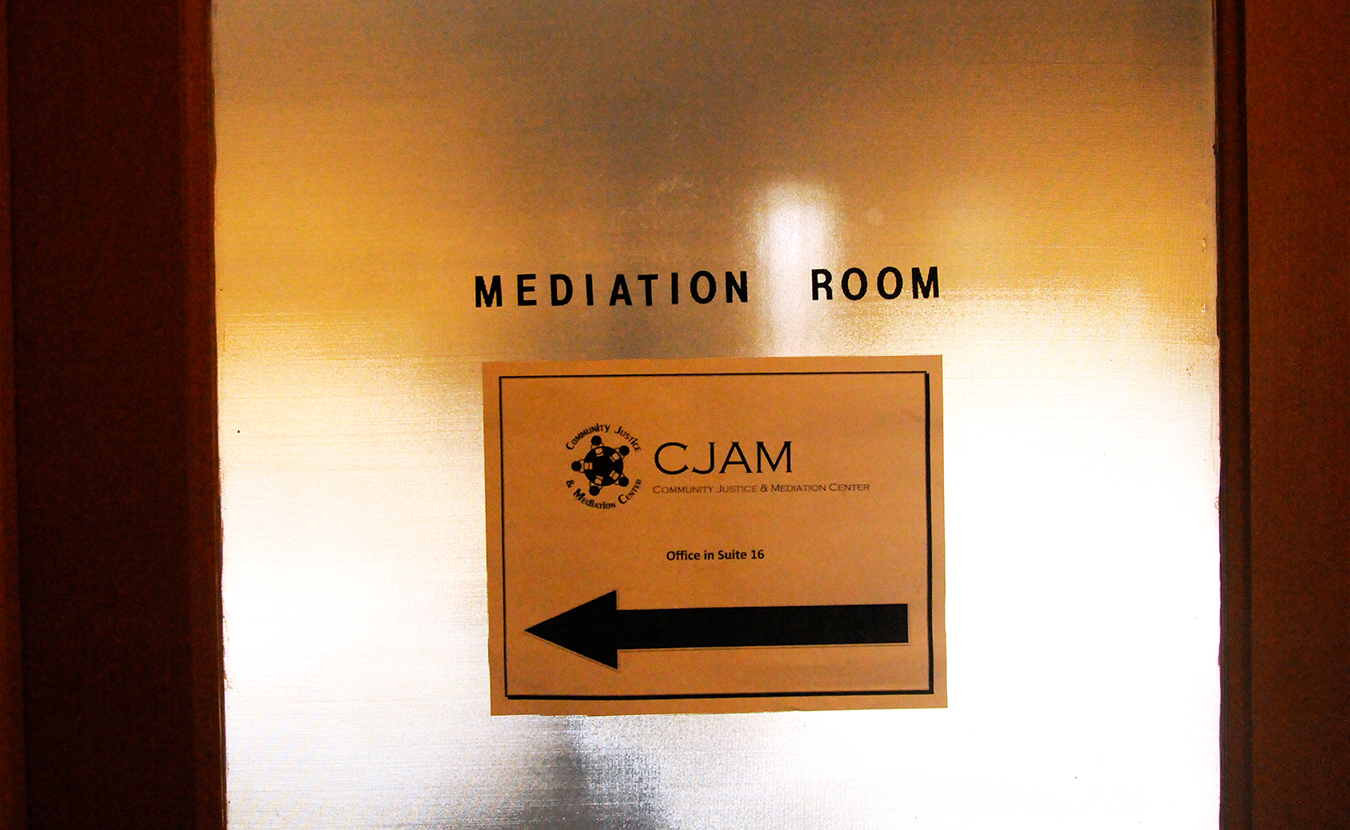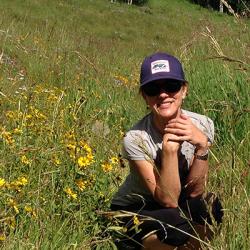Imagine that you wake up one morning to find your car door dented and your sideview mirror dangling from its wires. Your neighbor tells you that he witnessed the high schooler across the street backing into your car late the night before and leaving the scene of the crime. You’re new to the neighborhood but have had an amicable relationship with the teen’s family and you want to keep it that way.
What do you do?
You can file a police report that could result in punishment, if found guilty, but you don’t really want to press charges on a teenager.
Or, you can do nothing.
There is another way to handle this situation. Through restorative justice.
Restorative justice is a victim-centered practice and philosophy intended to repair the harms of crime. It is a collaboration of trained community members, victims, and offenders meeting to discuss accountability, making amends, and healing.
Types of harms suitable for restorative justice:
- Burglary, breaking and entering
- Vandalism, destruction of property
- Harassment, intimidation
- Criminal recklessness
- OWI/DWI with damage or bodily injury
- Writing bad checks, forgery
- Theft from employer/employee
- Leaving the scene of an accident (with damage or injury)
- Minor assault (e.g., fighting in school)
- Conversion, shoplifting
Mediation, also referred to as community mediation, is a process that helps people work through a disagreement. A mediator facilitates a negotiation between the parties in dispute. While the aim is to find a “livable” solution, reaching an agreement is always voluntary.
Types of relationships suitable for mediation:
- Neighbor, family, or friend
- Workplace and business
- Landlord/tenant
- Community and service organizations
- Civil and small claims
- Commercial and contractors.
Managing conflict through the practices of restorative justice and mediation are some of the services provided by Community Justice and Mediation Center (CJAM), a nonprofit organization that has been serving Bloomington and the Monroe County community since 1996.
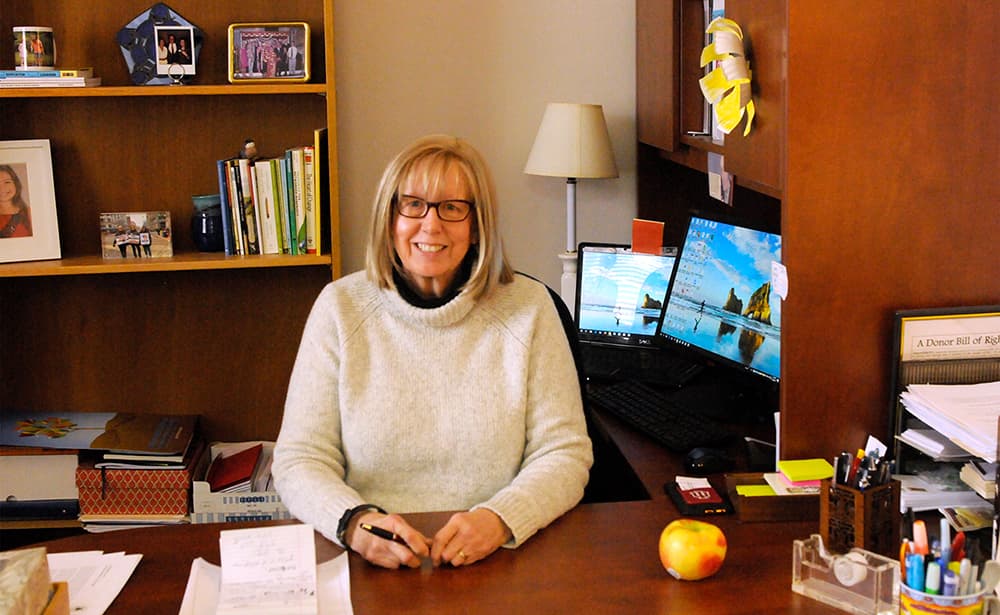
Liz Grenat, the executive director of CJAM, has found that all of her volunteers have one common belief: that people could resolve conflicts. | Photo by Ann Georgescu
CJAM’s mission is to promote a community that deals with conflict through fairness and understanding by exploring alternatives for resolving conflicts and emphasizing restorative measures rather than punitive ones.
CJAM is the progeny of an organization that formed in the late 1980s when the Citizens for Jail Improvement formed a collective with city officials to improve conditions in Monroe County jails. The group was awarded a grant that allowed them to initiate the first Victim Offender Restoration Program or V.O.R.P. Over time, the group transitioned from its collaboration to becoming fully operated by private citizen volunteers aiming to mend relationships in the community — between victims and offenders, between neighbors and friends.
For the case of the teen and the damaged car, the restorative justice process works like this: The victim whose car was damaged will be referred to as Client A and the offender as Client B. First, one or two mediators will volunteer for the case. A meeting is arranged with Client A and they are asked to tell their story. A second and separate meeting is arranged with Client B, who tells theirs. Since Client B is a minor, a parent will be present.
In both meetings, the mediators use active-listening and problem-solving skills to determine a possible solution. “After the initial discussions,” says Liz Grenat, CJAM’s executive director, “if it’s appropriate, they will bring the victim and offender together so that they can talk and come to an agreement.”
“Face-to-face meetings between clients has the most powerful effect,” says Grenat, “but they aren’t always possible. Only about 20 to 30 percent of victims meet with offenders, but it doesn’t mean that they haven’t given input.” To illustrate, she adds, “Say Client A has moved away but still wants answers and to see that the kid has done some volunteer work. The CJAM mediator will share the information gathered between the clients and show the offender how their actions have impacted the victim.”
Even in mediation cases, the parties don’t always come together, not right away at least. “If the conflict is such that the parties must continue their relationship,” says Grenat, “then CJAM offers counseling to help mediate long-term. The sessions help both parties individually prepare to have more productive conversations.”
Grenat became executive director in 2016 after a long career in social justice and juvenile justice. “A few years ago,” she says, “Monroe County decided to become a member of a national program that was focused on restorative rather than punitive justice, especially when it came to juvenile offenders.”
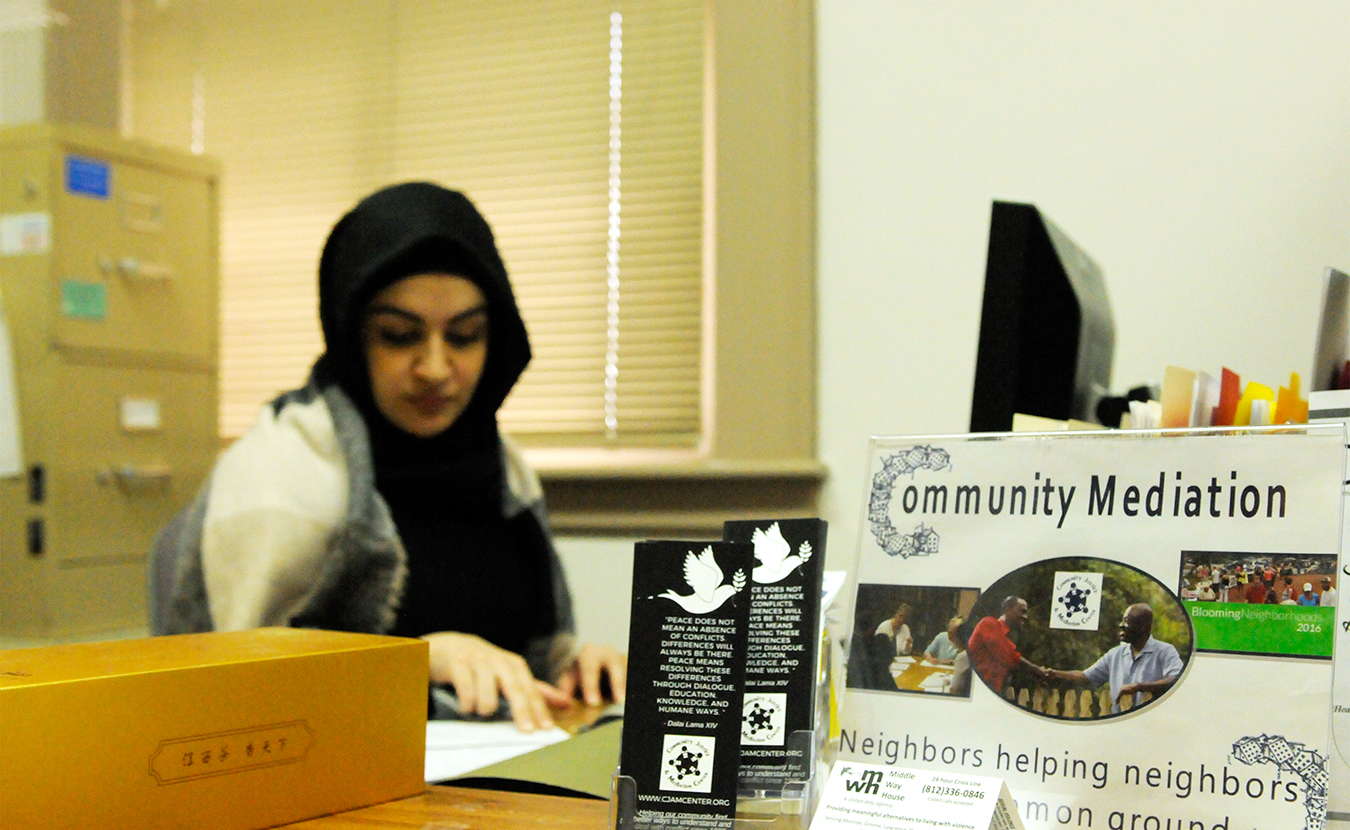
Douaa is one of CJAM volunteers who is trying to help people find an alternative to the traditional punitive justice system. | Photo by Ann Georgescu
When she started her role, she was surprised to find that while the volunteers at CJAM ranged in age from 19 to 82 and came from diverse professional and educational backgrounds, they all had one common belief: that people could resolve conflicts. “They are all motivated by the concepts of a safe, caring, civil, and just community,” says Grenat.” In short, it is the citizens who can best decide how to find peaceful approaches to heal the wounds of crime and disagreements.
“The restorative justice process emerged here in the U.S. from a growing frustration with the ineffectiveness of punishment and the growing prison rates,” says Grenat. “People started looking to indigenous communities, specifically those of New Zealand and Australia, that use a restorative, healing, and repairing approach. When someone has harmed, instead of ostracizing and punishing them, they bring them in more closely. They hold them, as a community, responsible. Then they work with them to figure out how to take responsibility for their behavior and help that person determine how they can repair the harm they have caused, and then invite them to stay in the community.”
Grenat says, “The whole idea of restorative justice is to restore — for the offender — and also [to provide] the victim with ways that they can feel safe again.”
Community justice centers started popping up everywhere after the turbulence of the 1960s. “At that time,” says Grenat, “communities were erupting into fire and there was a lot of tension. The young generation was rebelling and there was a lot of police brutality and riots. People weren’t dealing with conflict well, so they were turning to the justice system, which was an ineffective way to solve problems.
“The idea was, using the indigenous societies as a model, that we could train any community member to mediate and problem-solve — you don’t have to be an expert. The philosophy was, ‘We as community members, we as human beings, in an effort toward healing, can find a way to learn to listen to each other, to calm ourselves down, to search for common ground and creative solutions for those involved in conflict.’ The skills needed are very basic, but there is an art to them. But if you follow the process and build your skills, it’s efficient.”
American criminologist Howard Zehr, Ph.D., is considered a pioneer of the modern concept of restorative justice. In his book The Little Book of Restorative Justice (Good Books, 2002), he illustrates how restorative justice is different from traditional criminal justice by the questions it asks:
- Who has been hurt?
- What are their needs?
- Whose obligations are these?
- What are the causes?
- Who has a stake in the situation?
- What is the appropriate process to involve stakeholders in an effort to address causes and put things right?
In contrast, traditional criminal justice asks:
- What laws have been broken?
- Who did it?
- What does the offender(s) deserve?
Lisa-Marie Napoli, Ph.D., is associate director of Political and Civic Engagement (PACE) at Indiana University, which offers an undergraduate certificate program to prepare students for political and civic engagement. She has spent her career teaching and practicing conflict resolution, or, as she calls it, conflict management. “Conflict resolution is a bit of a misnomer because it assumes you are going to resolve something, but really you are trying to manage it, emotionally,” says Napoli.
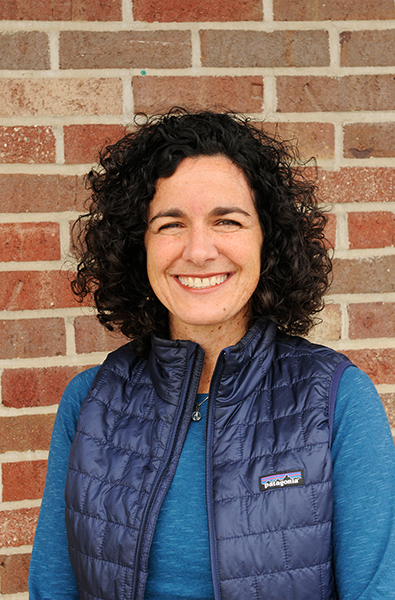
Lisa-Marie Napoli, Ph.D., associate director of Political and Civic Engagement (PACE) at Indiana University, says, “Restorative justice is designed to create healing.” | Photo by Ann Georgescu
While in graduate school, Napoli volunteered as a mediator for CJAM, and in 2016 she collaborated with the City of Bloomington and CJAM to head up the Downtown Safety, Civility, and Justice Initiative.
“The core of democracy and decision-making is very much about considering different perspectives and using conflict to play with ideas and get input to make decisions that are best for a pluralistic society,” she says. “Any time you have a pluralistic society, you are going to have different ideas, different perspectives, and conflict.
“Restorative justice is designed to create healing, and it is designed to have people learn from their mistakes — to have them see the consequences, rather than if they do something and then they get set out on the streets to pick up litter for months, or they get thrown in jail, they’re not going to understand how their actions impacted people. It really is the restorative justice approach to be able to learn and grow and heal. Quite honestly, it also gives the people who were victimized a chance to heal from the experience — to be able to speak their truth.”
In addition to mediation opportunities, CJAM offers different types of restorative justice programs: Victim and Offender Restoration Program (V.O.R.P.), Shoplifting and Theft Education Program (S.T.E.P.), and restorative justice workshops and trainings.
Participation in V.O.R.P. and S.T.E.P. is largely based on court referral for adults and, especially, juvenile offenders. Restorative justice workshops and trainings are for anyone who wants to learn about conflict resolution, mediation, and restorative justice. The 40-hour training helps participants enhance their communication, interpersonal, listening, problem-solving, and negotiation skills. Upon completion, participants are qualified to volunteer as a community mediator and restorative justice practitioner, as well as in other CJAM programs.
“It’s easier to do time and receive punishment than to take responsibility for your actions,” says Grenat. “When kids are the offenders and have committed a crime against an adult, they are asked what steps they plan to take in the future to prevent the crime from happening again. They are asked to revisit the steps it took them to commit the crime. Research shows a reduction in recidivism, especially for youth, from this process.” The V.O.R.P. program is 90 percent youth offenders and 10 percent adult offenders.
“For the S.T.E.P. program, offenders are given a pretrial diversion,” says Grenat. “They come to the office for a series of three classes. They are given a workbook with exercises, and the meetings are heavy in education and group interactions. If the offenders are willing, writing a letter of apology about their remorse and what they plan to do going forward is recommended. People who shoplift don’t understand the impact their actions have on the business owners or even the economy.” For example, a S.T.E.P. training question asks participants to estimate how many people shoplift. “Most of them guess around 80 percent,” says Grenat, “when in reality it is around 11 percent.”
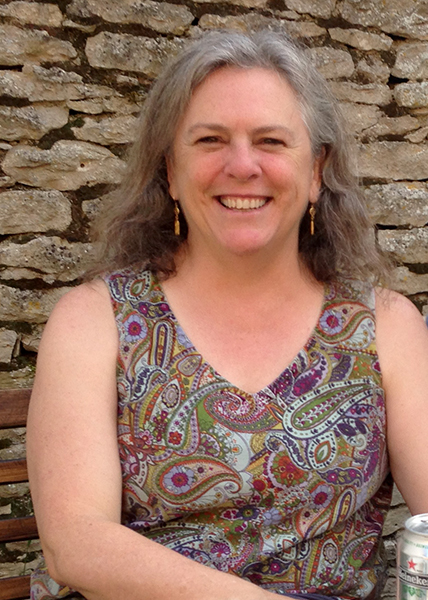
Pamela Eddy says it has been eye-opening to view Bloomington from the perspective of a CJAM volunteer. | Courtesy photo
Pamela Eddy is a CJAM volunteer who has mediated for community cases, V.O.R.P., and S.T.E.P. programs. “What always strikes me in the S.T.E.P. programs are the stories about what brought someone to that situation,” says Eddy. “They are incredibly varied, so whatever your stereotype might be, it’s much broader.” Peer pressure, entitlement, and necessity are among the reasons, even for adults.
For Eddy, it has been eye-opening to see Bloomington from the perspective of her work with CJAM. “In cases that involve a kid offender and an adult victim,” she says, “I am often surprised at how open the conversation can be and the willingness of the adult to have a dialogue with the kid — it can have a very valuable outcome.”
Eddy has seen some of the most positive outcomes with youth. “With kids, the conversation is always, ‘Who else is affected?’” says Eddy. “It could be someone in their own family, a disappointed parent or grandparent, or a younger sibling who you disappointed. The victim can say, ‘This is how it impacted me or my spouse or my kids.’ It is not about guilt-tripping them; it is about them seeing the broader impact of their actions and asking themselves, how are they going to address the outcome going forward.”
Restorative justice and mediation share some of the same skills and concepts but have different approaches. In restorative justice cases, there is a victim and an offender who has committed a crime. The programming is broader, with offenders participating in either V.O.R.P. or S.T.E.P. In mediation, there are two separate parties coming together to repair a relationship and a specific conflict to which both parties are seeking a solution. “In community mediation,” says Grenat, “we’re trying to provide a completely neutral space, where our mediators do not take sides or offer legal advice. They do try to help with power imbalances by being sure that someone isn’t agreeing to something that is unfair or is something that they would not be able to deliver on. The mediators are trying to guide people to come to some understanding together.”
Eddy says, “People in community mediation have their positions based on their needs. So if someone says, ‘I have this position because they are questioning my integrity’ or ‘I have financial needs that absolutely have to be addressed,’ then you start to see the needs behind the positions and you can also see how they overlap, which is most commonly ‘I need respect.’
“Sometimes the solution isn’t what they’ve come to the table with. Once both clients realize that they both want respect, then, all of a sudden, more solutions become available and you can start brainstorming. It’s cool to watch.”
In the years that Eddy has been a volunteer mediator, she has seen the positive sides of both mediation and restorative justice as approaches to healing and making things right between two opposing people. She also sees a common thread between them. “One of the most important questions that each client is asked in the initial meeting is ‘What is it that you want the person to hear you say, and how can you say it in a way that they will hear you?’” she says. “It is never about ‘I get, you lose’ or ‘You get and I lose.’”
“There are so many ways to resolve conflict that aren’t based on competition and litigation,” says Eddy. “I think that is the message here.”

